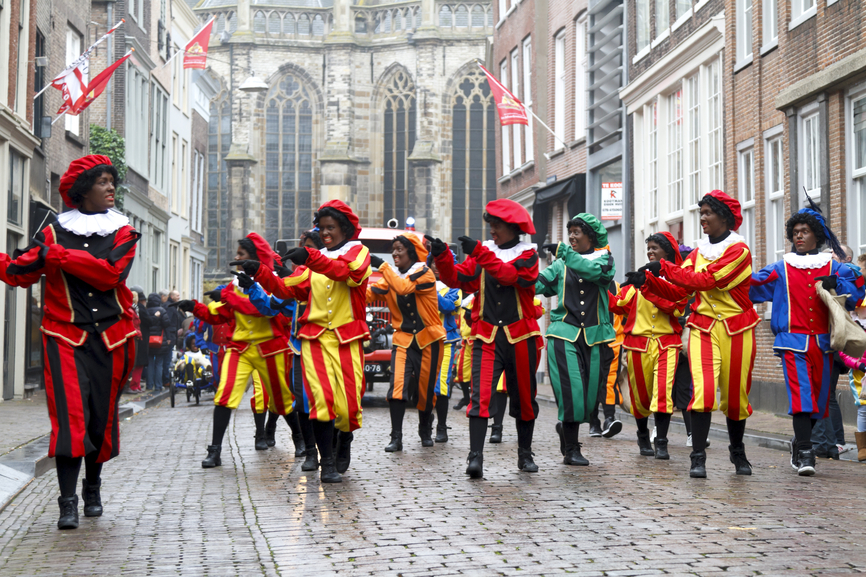Zwarte Piet ‘contravenes UN rights of the child’ says children’s ombudsman

Zwarte Piet in his current form contravenes the United Nations Convention on the Rights of the Child (UNCRC) because he can contribute to ‘bullying, exclusion or discrimination’, according to a report from the Dutch children’s ombudsman.
Margrite Kalverboer calls for the figure of Santa’s helper to change, removing ‘discriminatory and stereotypical features’ so he can become a figure that reflects the joy of the Dutch festival celebrating St Nicholas’s birthday.
Each year, Sinterklaas has an official arrival in the Netherlands by boat, and tours the country accompanied by Zwarte Pieten (‘black Pete’) figures: blacked-up men and women with frizzy, black wigs, red lips and sometimes gold earrings, who give out sweets.
Controversy
Since the arrest of campaigner Quinsy Gario in 2011 for wearing a T-shirt saying ‘Zwarte Piet is Racisme’ at Sinterklaas’s arrival, the figure has become steadily more controversial. Last year, a UN committee said it reflected negative stereotypes, adding that ‘a deeply rooted cultural tradition does not justify discriminatory practices.’
Now the children’s ombudsman has investigated 20 reports of discrimination relating to the figure of Zwarte Piet, interviewing young people from 10 to 16 who say racial discrimination worsens around Sinterklaas. ‘Children experience the combination of a number of typical characteristics and behaviours of Zwarte Piet as negative and discriminatory against people with dark skin,’ the report says. ‘The children’s ombudsman finds on the basis of these discussions that children are being bullied or discriminated against with reference to Zwarte Piet.’
Kalverboer told NOS broadcaster that parents, schools, youth organisations and media must reshape the figure to ensure ‘children of all skin colours have fun at this festival.’
ZP ‘lesser figure’
‘We see that children can feel discriminated against through the current form of Zwarte Piet so it is a breach of their right to be treated equally,’ she said. ‘It’s not up to me to say how Piet should look, but children say they don’t like the frizzy hair, earrings, thick, red lips, or that Sinterklaas is the boss and Zwarte Piet is lesser, as they see it.’
She added that fierce campaigning on both sides, for and against Zwarte Piet, is not welcomed. ‘Children say this debate has become dominated by adults,’ she said.
The mayor of Amsterdam, Eberhard van der Laan, has pledged to make the figure more modern, and earlier this year, two actors from Sinterklaasjournaal television show resigned, with ‘head Piet’ Erik van Muiswinkel saying NTR broadcaster must ‘listen to calls for another kind of Piet’.
Presenter-turned-political candidate Sylvana Simons also told Dutchnews.nl she believes the debate is linked to a lack of public recognition of the Netherlands’ role in the slave trade, while in ‘the United States, there is a conscious awareness of what slavery was and why [blacking-up] is not appropriate.’
Defenders
But there are many equally vociferous defenders of the figure, and Facebook pages calling for Zwarte Piet have hundreds of thousands of ‘likes’.
Deputy prime minister Lodewijk Asscher told NU.nl that it is not up to the government to change the figure or make any kind of ‘Piet law’ and VVD MP Michiel van Veen added he was ‘sad’ about the ombudsman’s comments, saying: ‘Children have never thought about these issues. I really don’t believe it.’
Thank you for donating to DutchNews.nl.
We could not provide the Dutch News service, and keep it free of charge, without the generous support of our readers. Your donations allow us to report on issues you tell us matter, and provide you with a summary of the most important Dutch news each day.
Make a donation